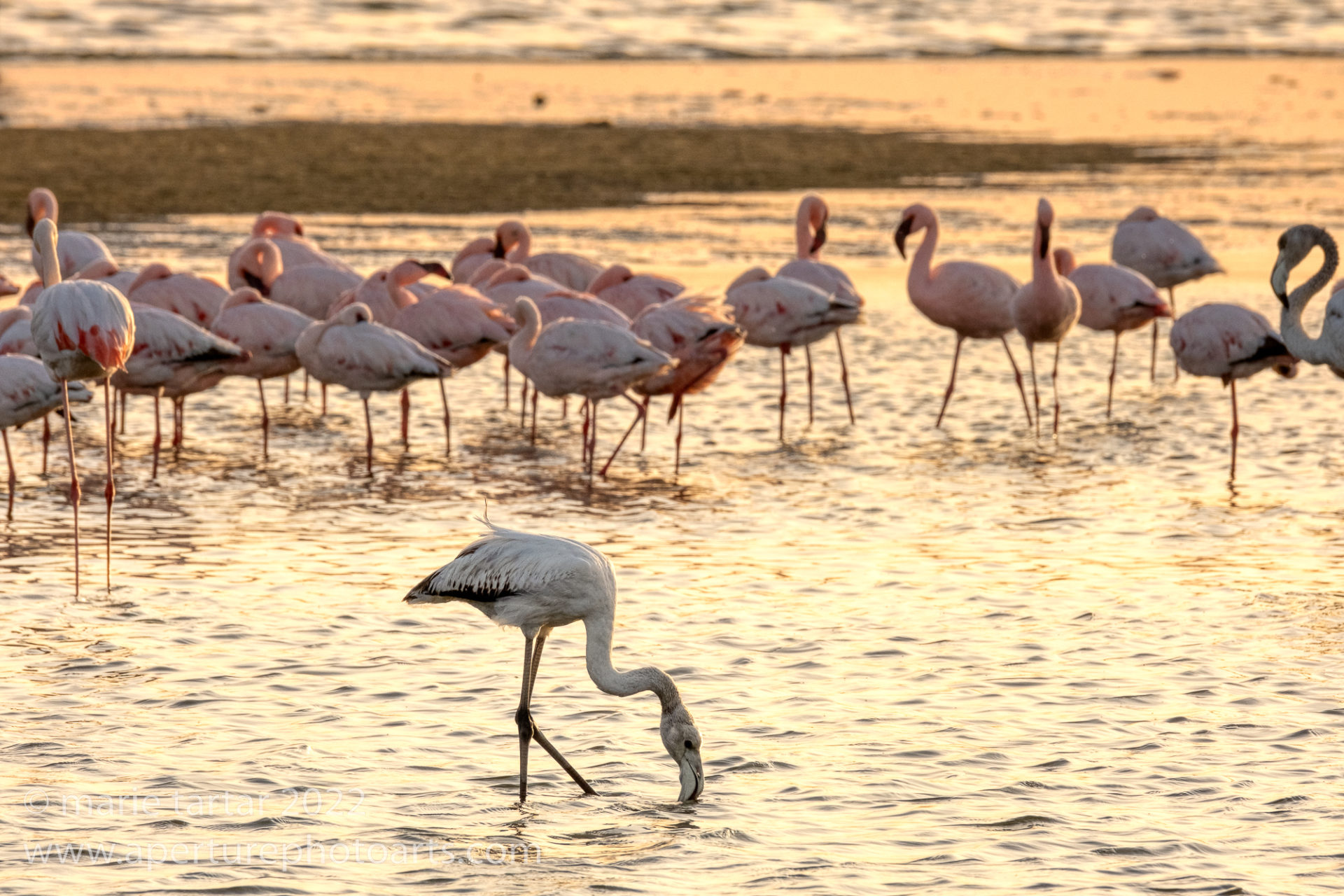
Martin Bailey bills this photographic expedition as his Complete Namibia Tour and it is indeed comprehensive and very well organized. One week into it, with a full week to go, we have marveled at three dramatically different components of Namibia, each worthy and photographically inspiring destinations in their own right. After gathering in Windhoek, we drove south, focusing first on the Quiver Tree Forest and Giant’s Playground. It being winter, it was cold enough there to wear down jackets, a stark contrast to the hot sea of sand we would encounter near Lüderitz on the Atlantic coast, where men once pursued dreams of riches mining diamonds, enough to engender towns that housed and catered to the miners, now abandoned testaments to the world’s insatiable appetite for diamonds. The third stage of this multi-part trip, the red sand dunes and sculptural trees of Sossusvlei and Deadvlei in the Namib-Naukluft Desert, had been the main draw for me to come to Namibia. And now we were again switching gears and heading to the Atlantic coast to Walvis Bay. The name, Whale Bay in English, gives a clue as to one of the components leading to the development of Namibia’s second largest city. Its ownership has been disputed through the years, due to Walvis Bay being the largest natural harbor on the Atlantic coast between the Cape of Good Hope and Amsterdam. The British were the first to claim it, in 1878, after guano deposits were found in the surrounding lands in the mid-19th century. This was a few years before the rest of today’s Namibia was occupied by Germany and called the colony of South West Africa. This lasted until WW I and for much of the 20th century, Walvis Bay was administered by South Africa, which held onto it, even after Namibia achieved independence from South Africa in 1990, until 1994.
Although fishing continues to be a significant industry in Walvis Bay, salt works and tourism are also important components of the local economy. The large lagoon attracts innumerable birds and photographers like us, drawn by the largest concentration of flamingos in Africa.
Sunday June 5, 2022
One week into the trip and we have seen soooo much. Today we left Sossusvlei, heading north first on a hot traverse of an increasingly bleak desert before heading west to the coast at Walvis Bay.
It was windy on awakening, as we took our leave of Sossus Dune Lodge. We were off at 8 am but stopped mid-morning at Solitaire for a pit stop, as well as a coffee break. Steve and I shared a piece of their famed, very tall and quite tasty apple pie. Solitaire’s decor features many repurposed old cars, now incorporated into the landscape as found objects d’art. There were also flora and fauna surprises, including a pair of peacocks and brilliant red cactus flowers.
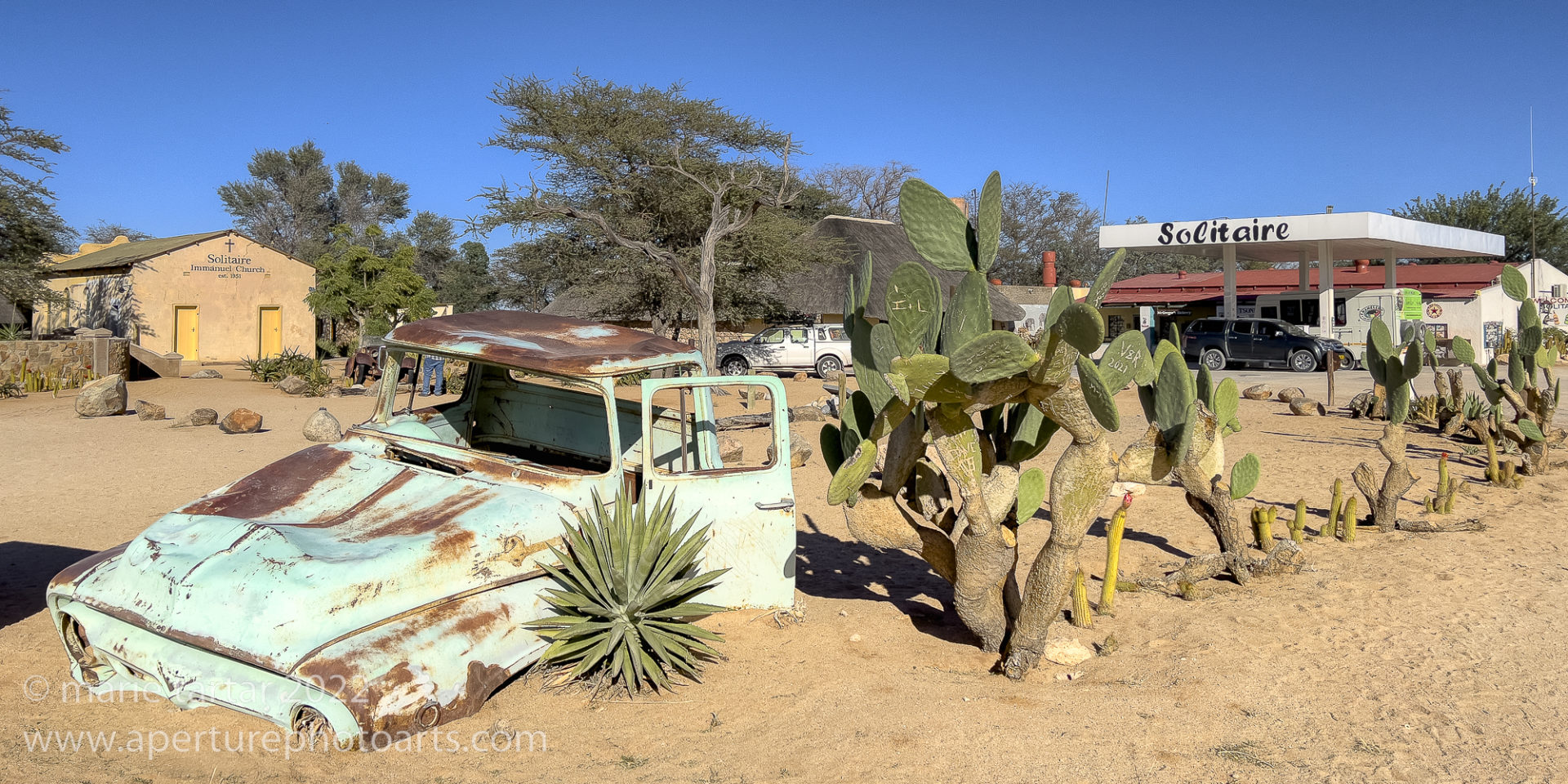
Solitaire, Namibia, an unusually interesting gas station/coffee shop/convenience store/restroom stop, with found art, Namibia-style. But what possesses people to think they are embellishing nature by carving their initials on cactuses?

Solitaire, Namibia: the windows of the general store bore colorful testimony to the many travelers who pass through here.
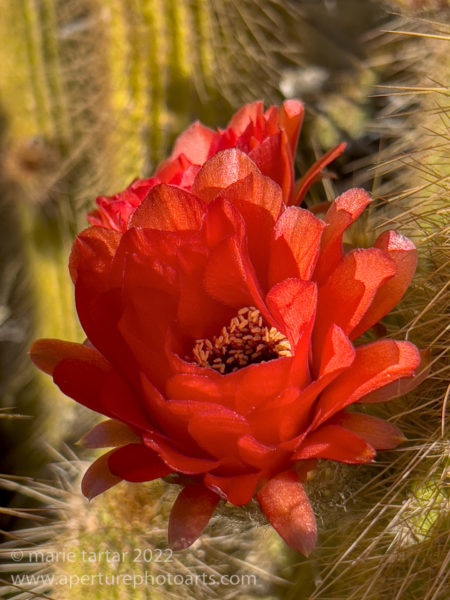
The cactus garden, where Steve and I shared a slice of Solitaire’s famous apple pie, was in full bloom.
Our next stop was for a group photo at the Tropic of Capricorn.
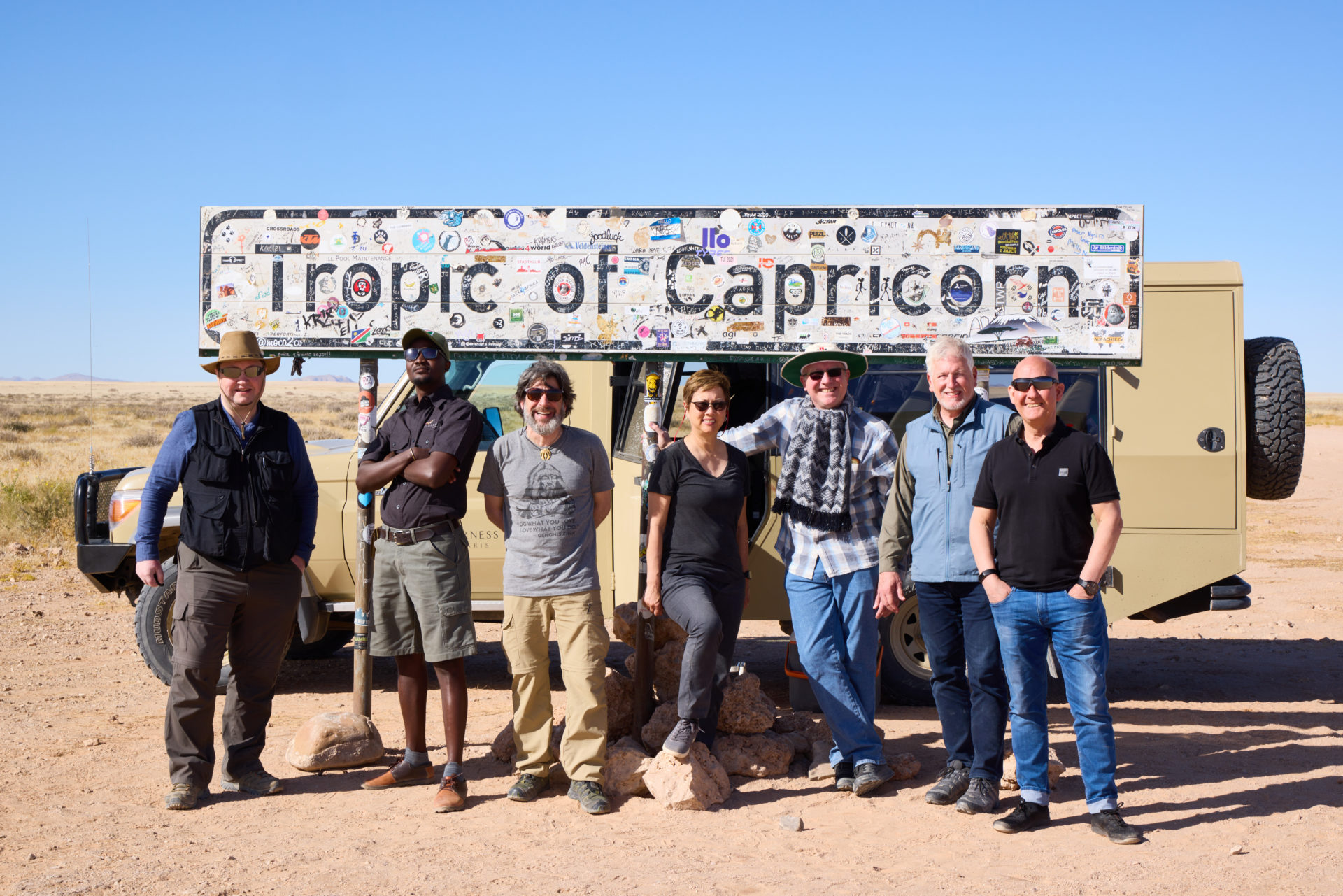
Our Namibia group, crossing the Tropic of Capricorn: from left, Martin Bailey (photo pro and organizer), Forster (driver and guide from Wilderness safaris), Greg (aka Mountain Man), me, Jon, Steve and Jan. Conspicuously missing from this picture was Greg’s Mountain Man broad-brimmed brown hat, complete with its tag.
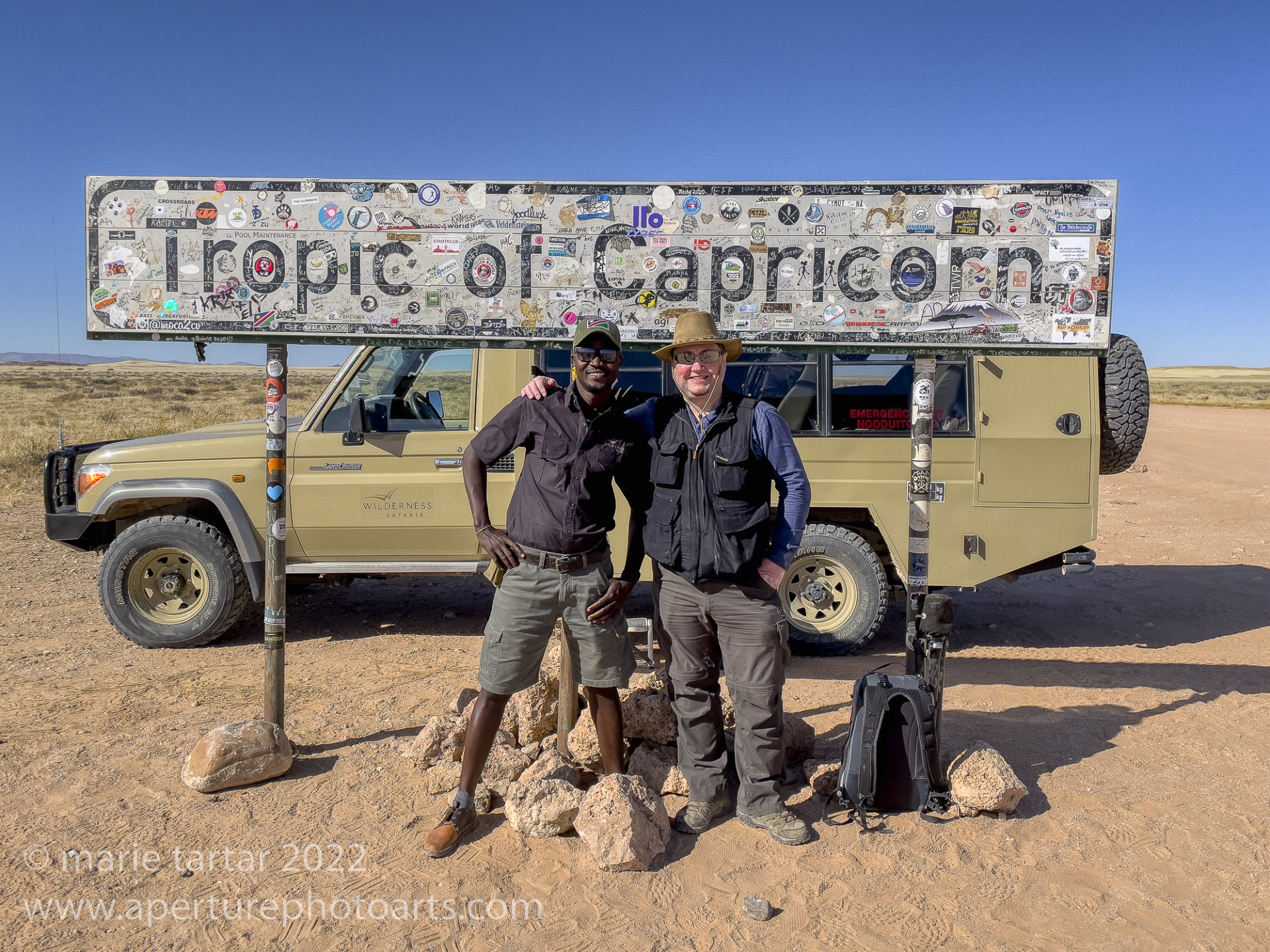
Our fearless leaders at the Tropic of Capricorn (if your geography is rusty, that’s 23.5 degrees below the equator and marks the southern extent of the tropics): on left, Forster, our Wilderness Safaris driver/naturalist/guide/all-round-nice-companion; on the right, Martin Bailey, organizer of our trip and photographic guide, also all-round-nice-travel-companion.
We were in for dirt roads and more washboard as we traversed a desolate-appearing desert, criss-crossed by tracks from uranium mining concerns. Along the way, I finished listening to Glory by Noviolet Bulawayo, a terrific allegory of Jidada, a fictional African country populated with animals, based clearly on Zimbabwe, which is ruled by an Old Horse, who clings to power over decades as did Robert Mugabe.
Forster showed off his driving prowess by maneuvering the vehicle up a steep sandy track to a natural cave for lunch.

In the middle of an unpromising-looking Namibian desert, this shaded natural picnic spot was a surprise!
As always, lunch was an amalgam. Most contained a hard-boiled egg, a piece of fruit, a granola bar, a sandwich, a juice box, generally more than most want for lunch. Forster would gather up the unloved, untouched lunch components for distribution at a future stop. I made a lunch of chicken pieces, contributed by my traveling companions.
Our hotel, Flamingo Villas, is across the street from a lagoon filled with flamingos.
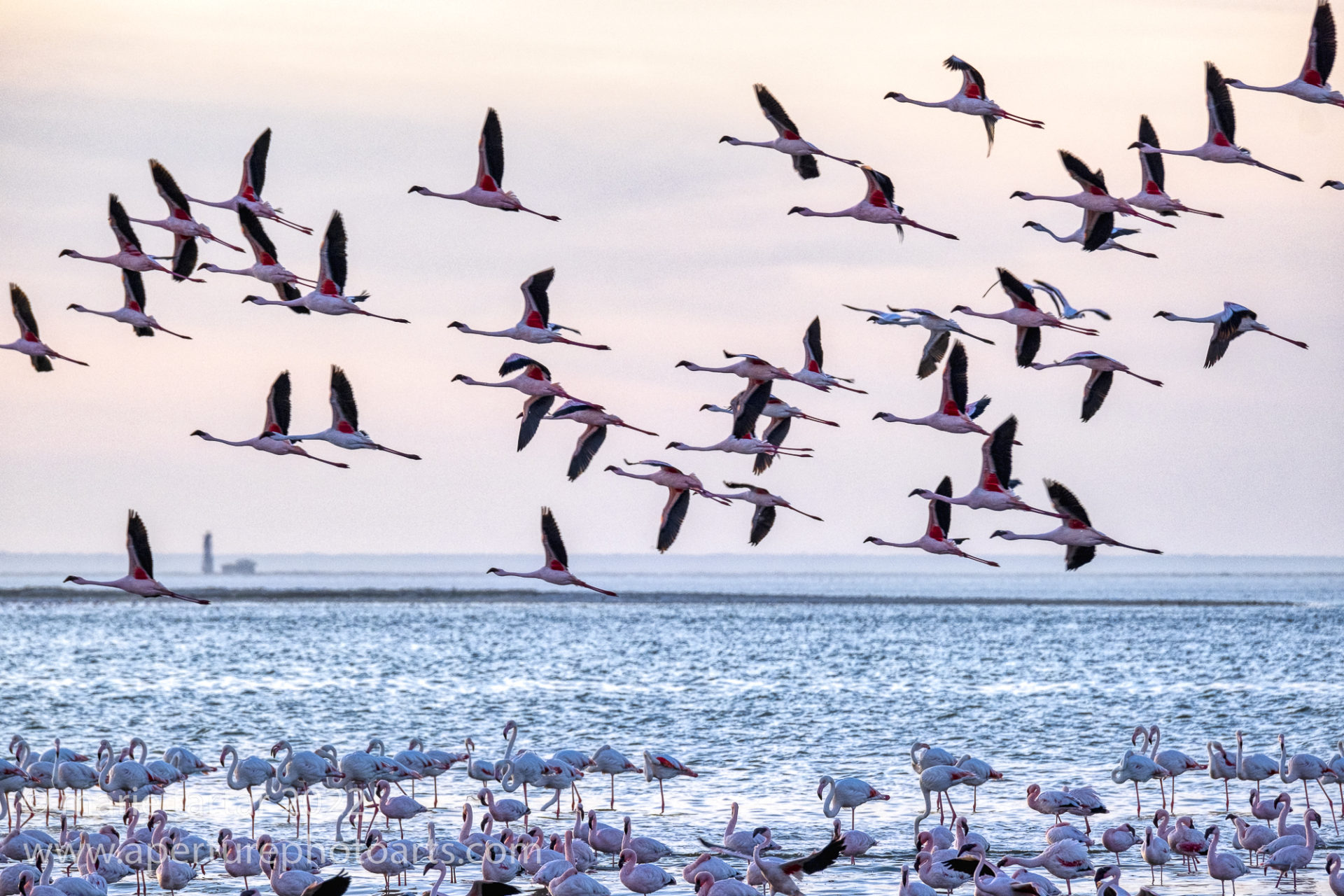
Lesser flamingos take to the air at Walvis Bay, Namibia. A mix of greater and lesser are feeding in the shallow lagoon waters below.
Two species of flamingos predominant in southern Africa: greater and lesser flamingos. The larger greater flamingo (Phoenicopterus roseus) has a black tip to its pale bill, while the smaller lesser (Phoenicopterus minor) has a dark red bill. The lesser are more numerous and are the predominate species in Lake Nakuru in Kenya, which I remember fondly as a sea of pink. Most of the flamingos in Walvis Bay are the greater.
It was warm enough in Walvis Bay that I finally made use of the one pair of shorts I packed. We took advantage of the laundry service to freshen up our wardrobes after the heat and sand of the desert. Martin did as well but had 3 shirts go missing mysteriously.
We waited until the heat of the afternoon had waned a bit before walking across the street with our long lenses and tripods. The flamingos, while relatively static, are constantly in slow motion, with their heads down in the water filter feeding, shuffling their feet to rustle up the grub while slowly pirouetting.

Flamingos derive their pink color from the carotenoids in their food sources, predominantly algea and crustaceans. Young flamingos are pale grey or white. As they feed and grow, pigment accumulates in their feathers.

Greater flamingo feeding, Walvis Bay, Namibia. Flamingos accumulate enough carotenoid pigment in their first 2 years to become the pink we expect. The joints we see in their long stick-like legs are actually ankle joints-their knees are hidden by their feathers.
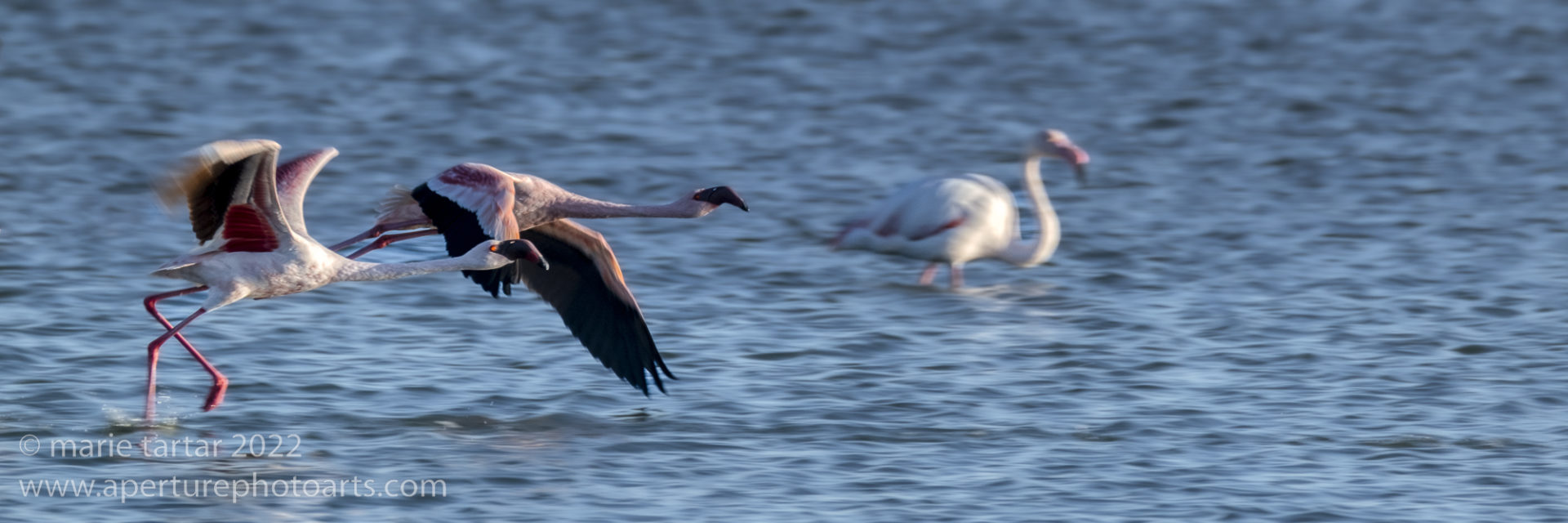
Lesser flamingos take to the sky, streaking past a greater flamingo in the lagoon at Walvis Bay, Namibia.

For a slow-moving bird, photographing flamingos is surprisingly tricky. It’s a waiting game and a game of numbers, trying to catch them with the heads visible, as they are often preening their feathers or siphoning meals from the water.
After sunset, we dined at the hotel’s restaurant where I sampled the regional seafood of spicy prawns and papilote fish.
Monday, June 6, 2022
Back across the street the next morning before breakfast, the streets were quiet and dark and the rising sun showed the flamingos in a completely different, soft pink light.
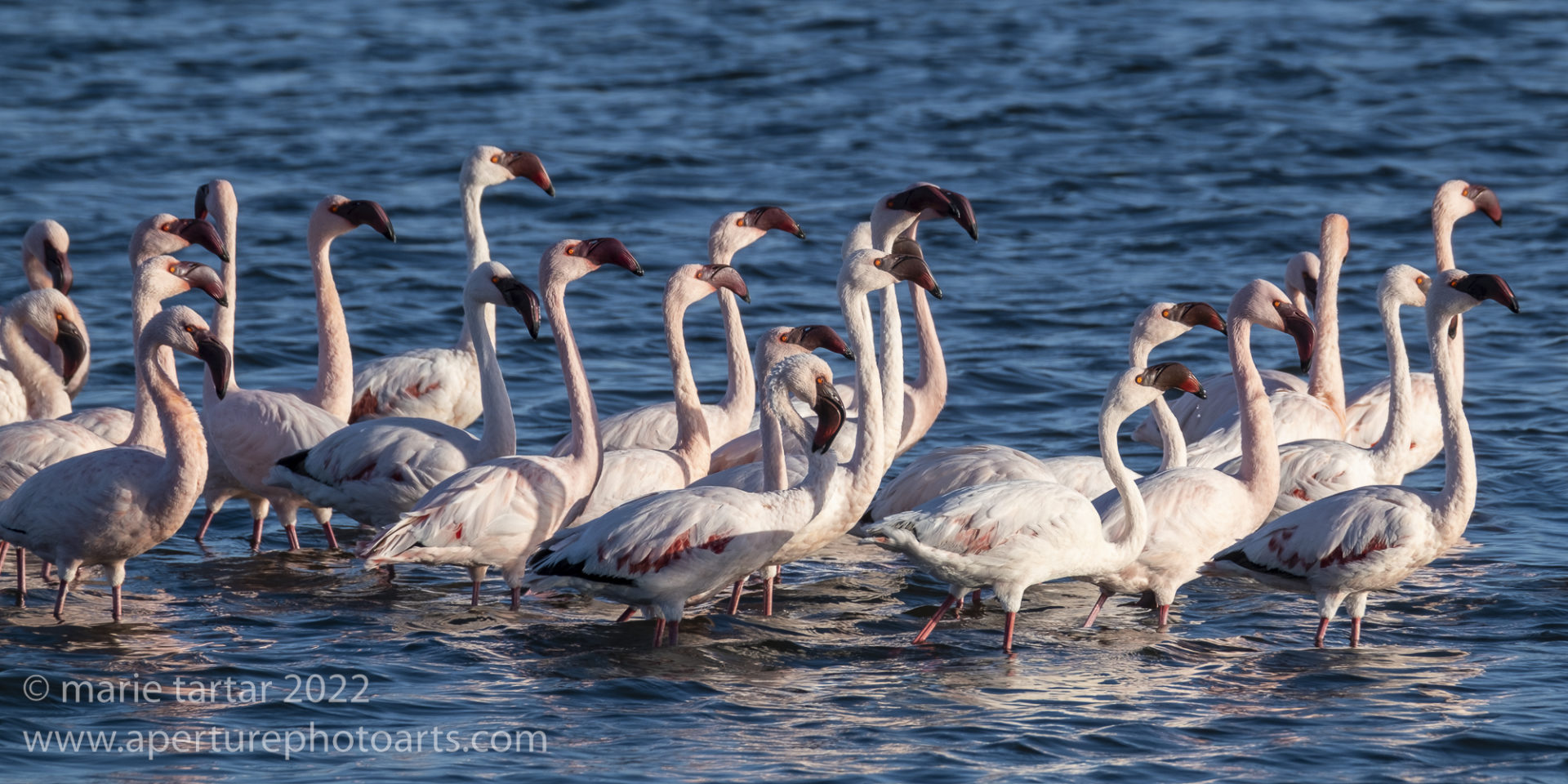
A flamboyance of flamingos parading around in an orderly fashion is sometimes a mating display. These are lesser flamingos.
We loaded up into the vehicle after breakfast to expand our avian horizons with a slow traverse out to well-named Pelican Point.
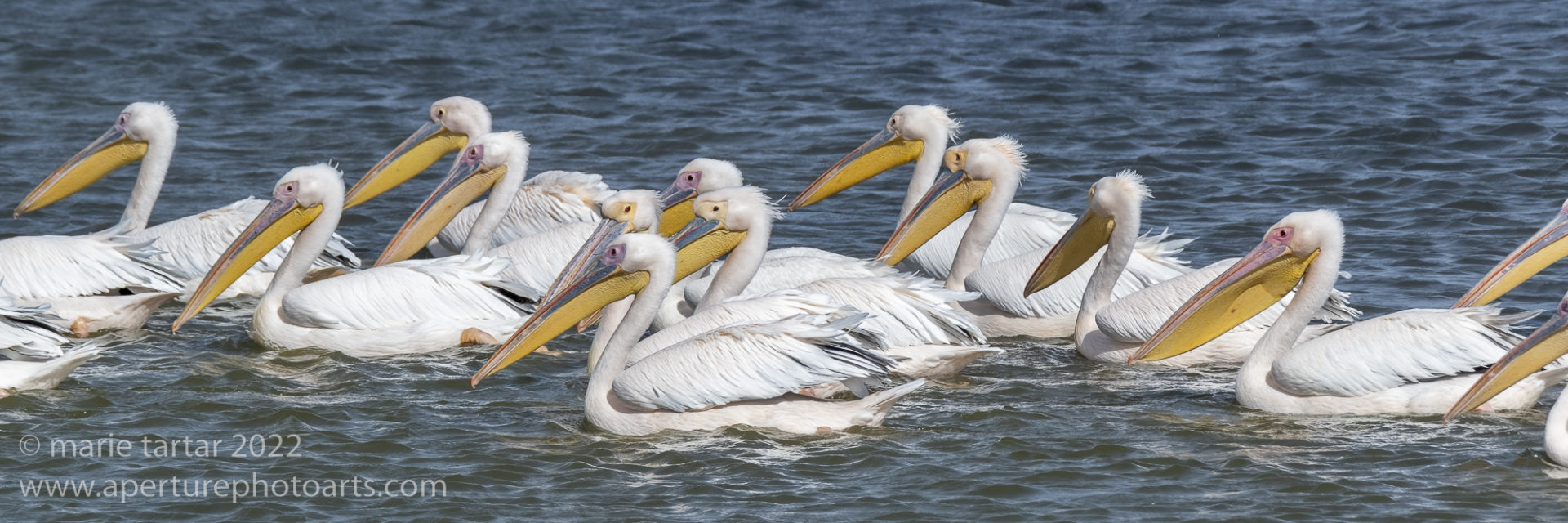
A plethora of pelicans, Walvis Bay, Namibia (official names for groups of pelicans include squadron, scoop and pouch; the latter two names refer to their capacious gular skin pouches, with which pelicans scoop up large quantities of water and prey, including fish, rodents, amphibians, even birds-gulp!)
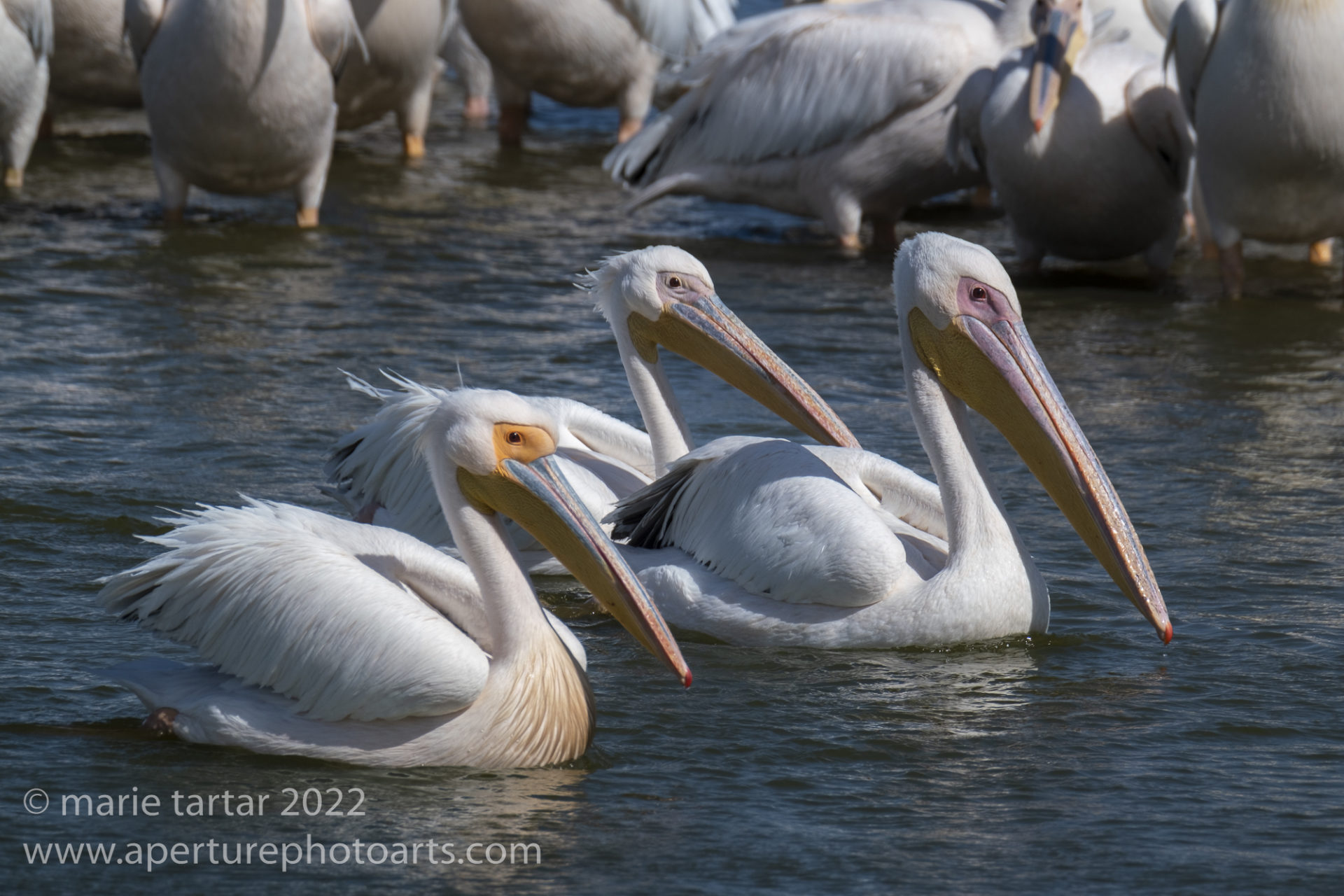
Photographing pelicans is a confusion of beaks every which way, another waiting game for order to appear in the midst of avian chaos.
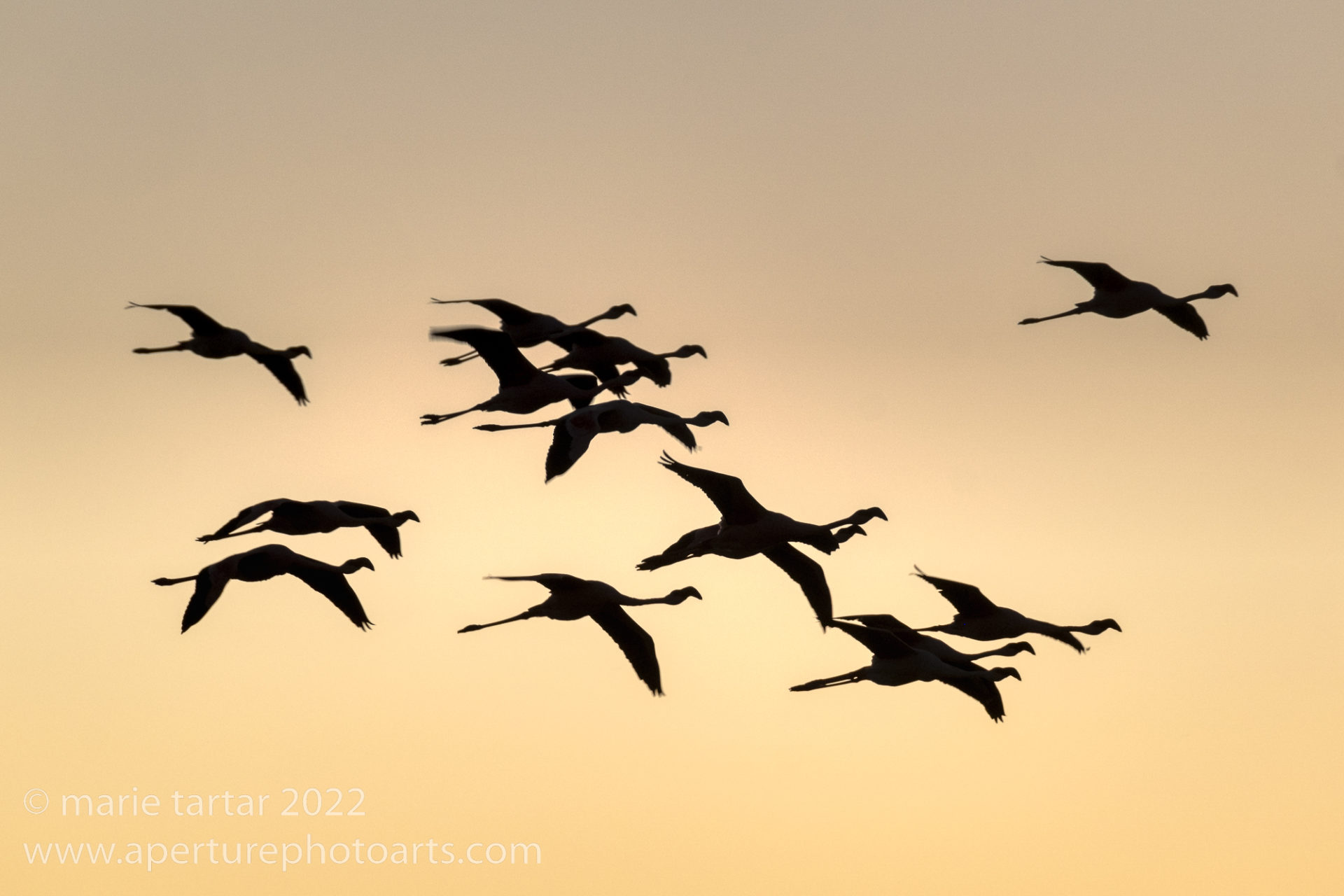
In the skies, the flamingos come and go, sometimes shifting in response to potential threats (e.g., we saw a paddleboarder’s approach prompt one flock of flamingos to take off), sometimes relocating to more promising feeding grounds. Extending their heads and long legs counterbalances the weight for flamingos in flight.
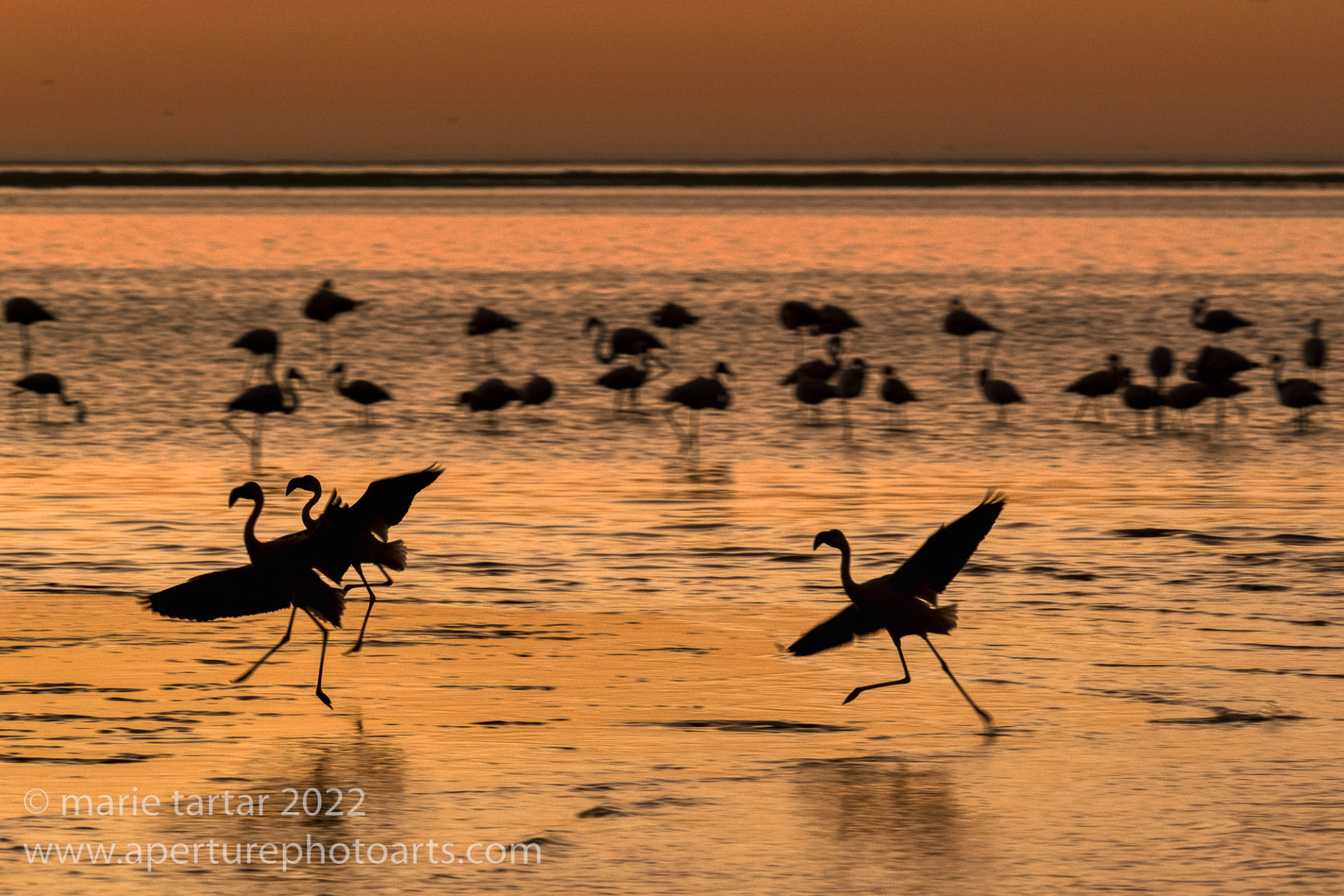
Flamingos can take off from land or water, taking a few take off steps to gain enough speed to lift off.
Martin had described this section of our trip as ” a vacation inside a vacation” or a rest day. It did feel relaxed, with the lagoon and the flamingos in easy walking distance, but he wasn’t accounting for the mountain of work generated for after the trip, as birds require shooting at many frames/second, generating a lot of material to sort through later. His pre-trip info was quite comprehensive, including a few memorable gems (per Martin, these were courtesy of the operator, Piper & Heath) that made me giggle, including “Really short skirts are not practical for getting in and out of game vehicles” and “On game drives, the roads can be bumpy and uneven so a suitable bra may be required”. As the only woman on this trip, I’m sure the men just glossed over these instructions.
After our seaside stay refreshment, we were again heading north and turning inland, along the famed and feared Skeleton Coast, en route to Palmwag and a visit to the Himba people, another complete turnabout of photographic emphasis-stay tuned!
-Marie

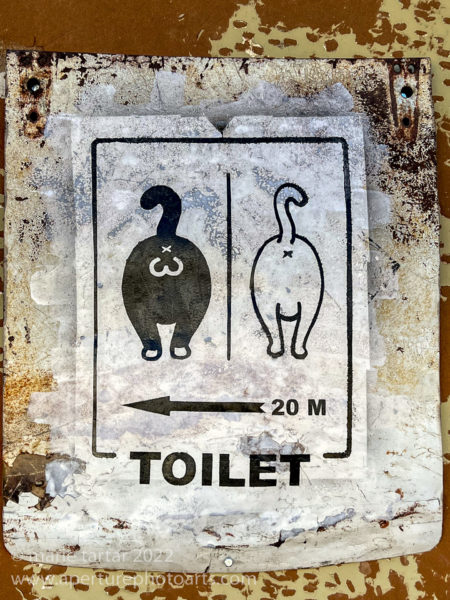
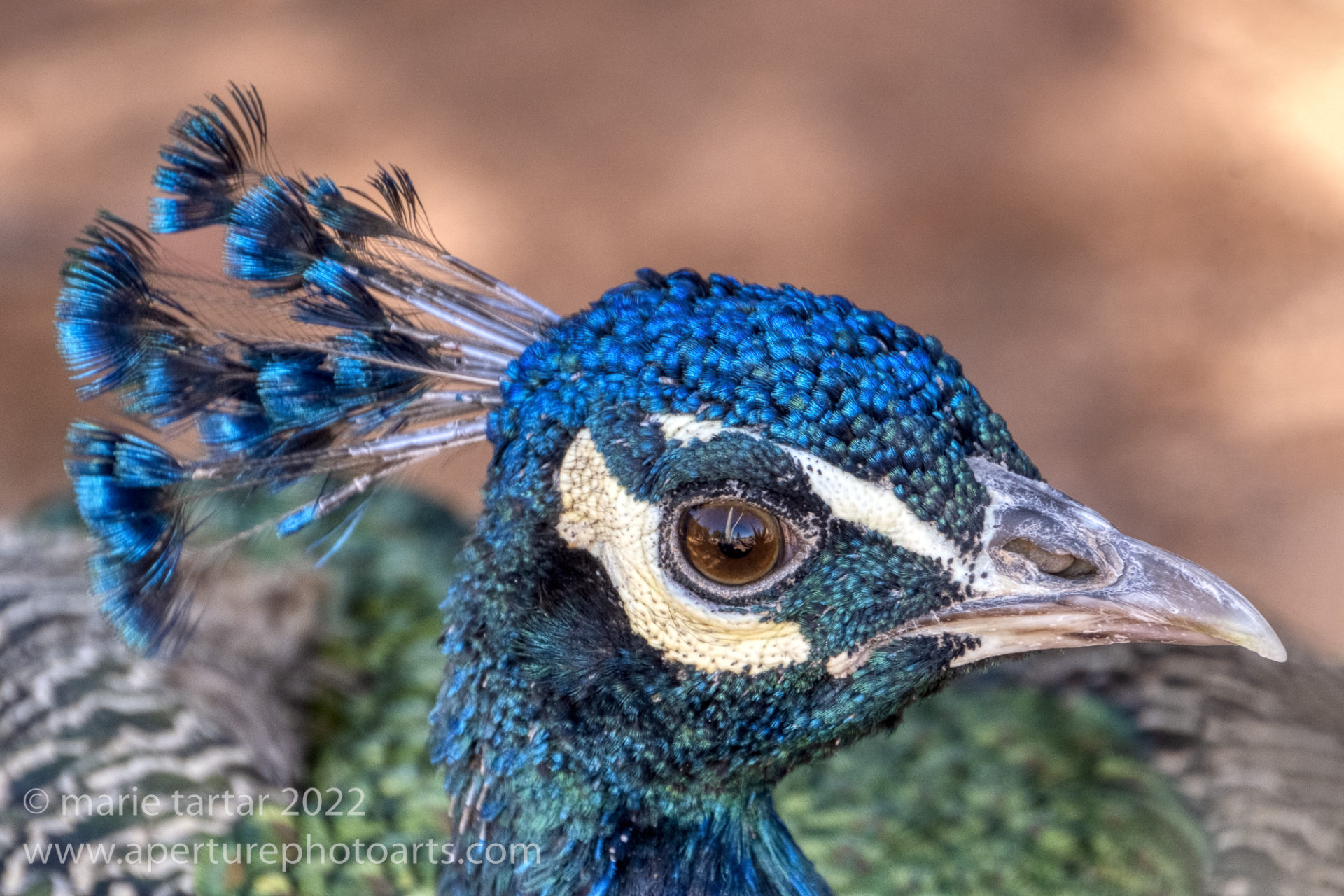


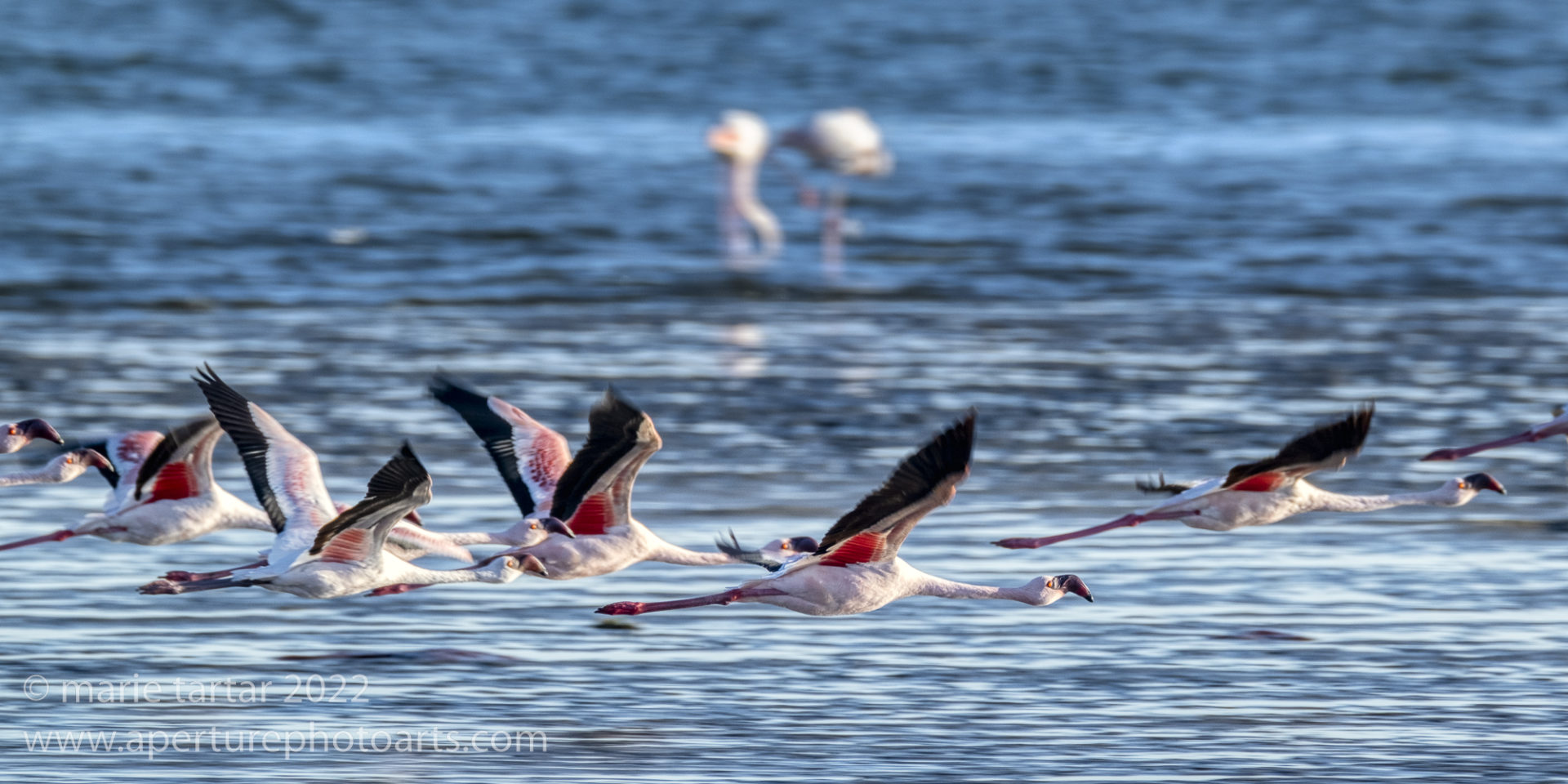

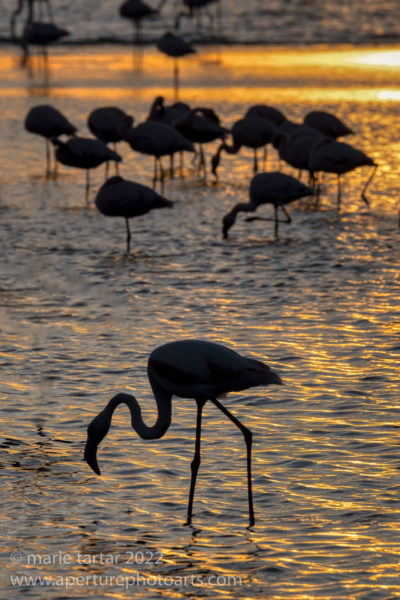

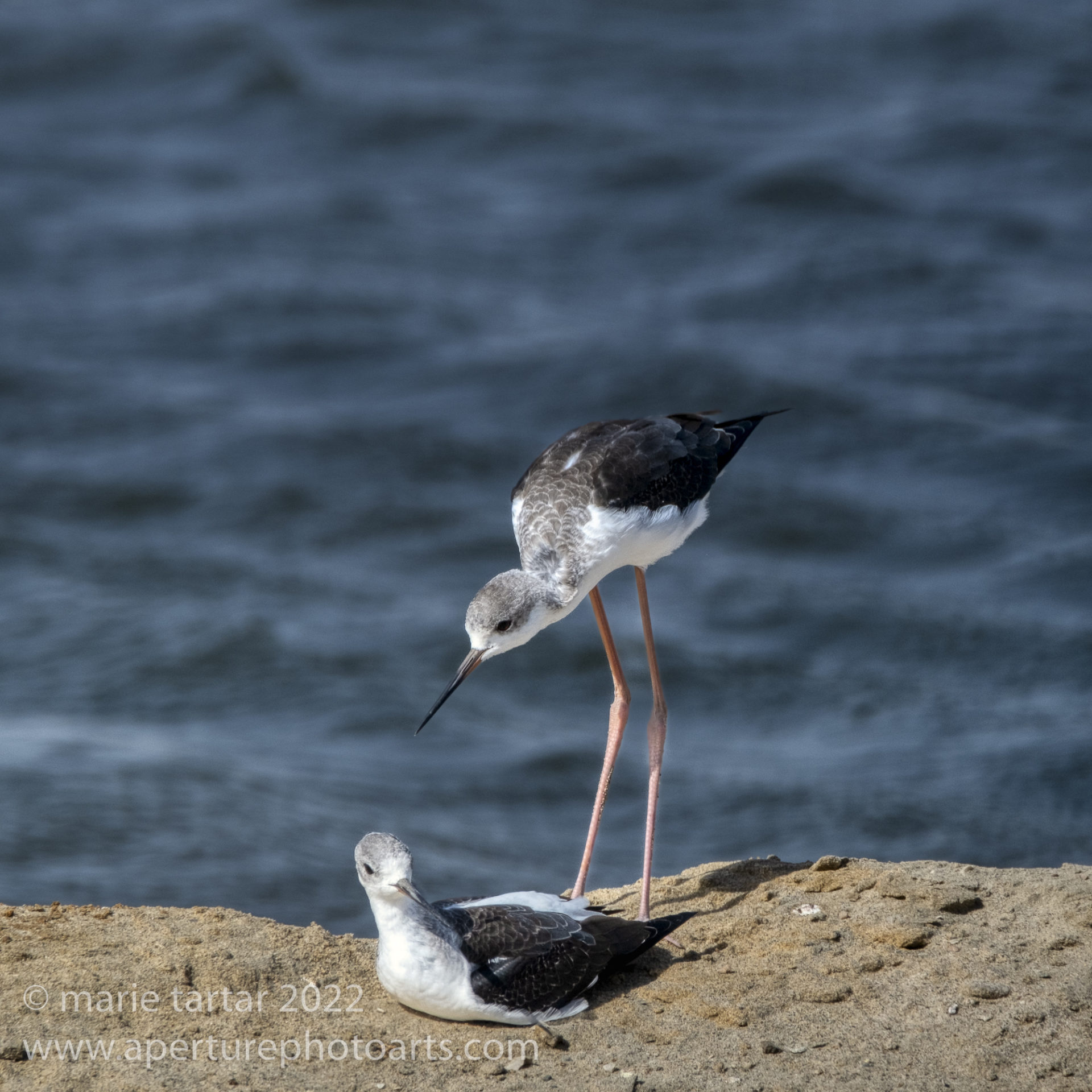

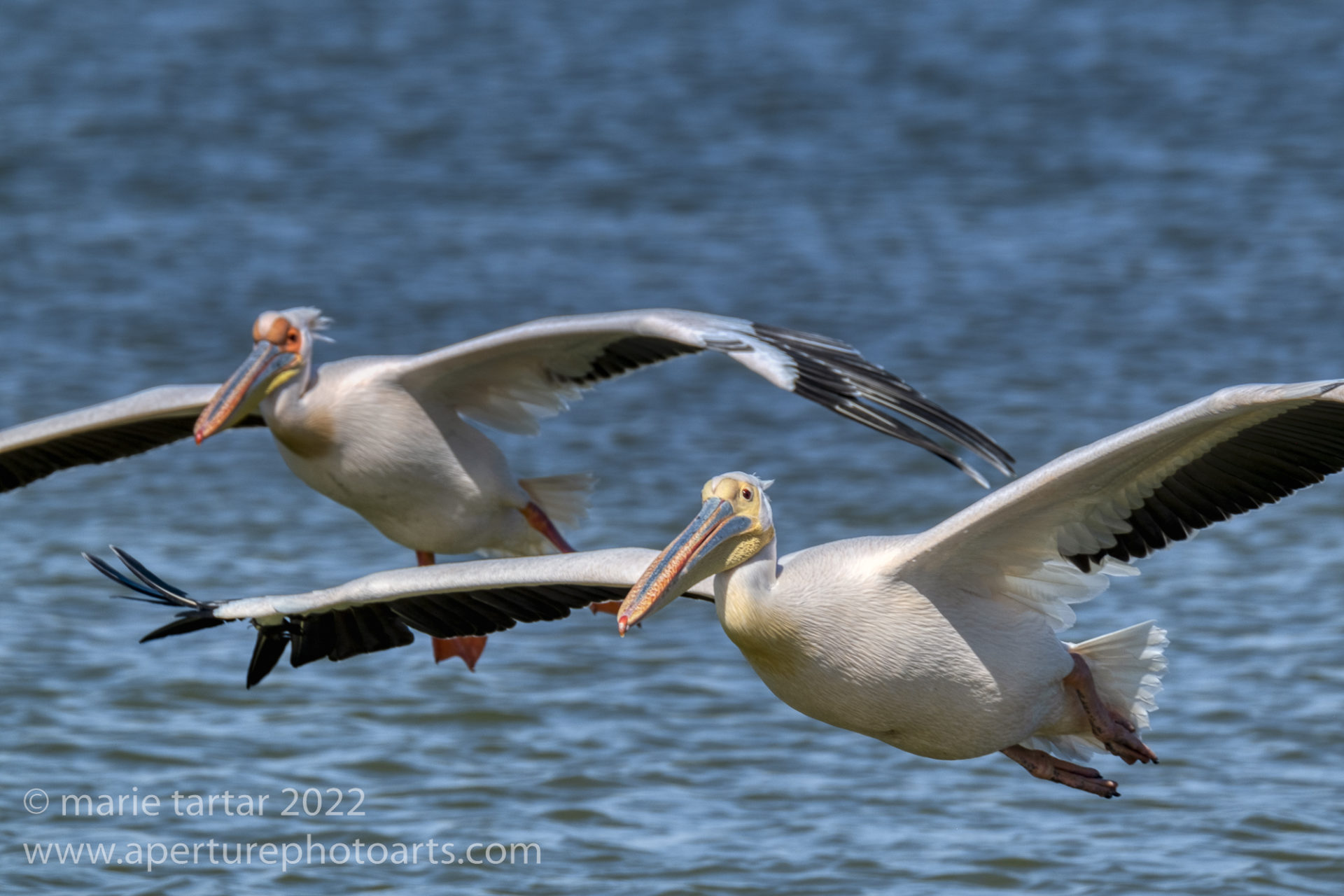
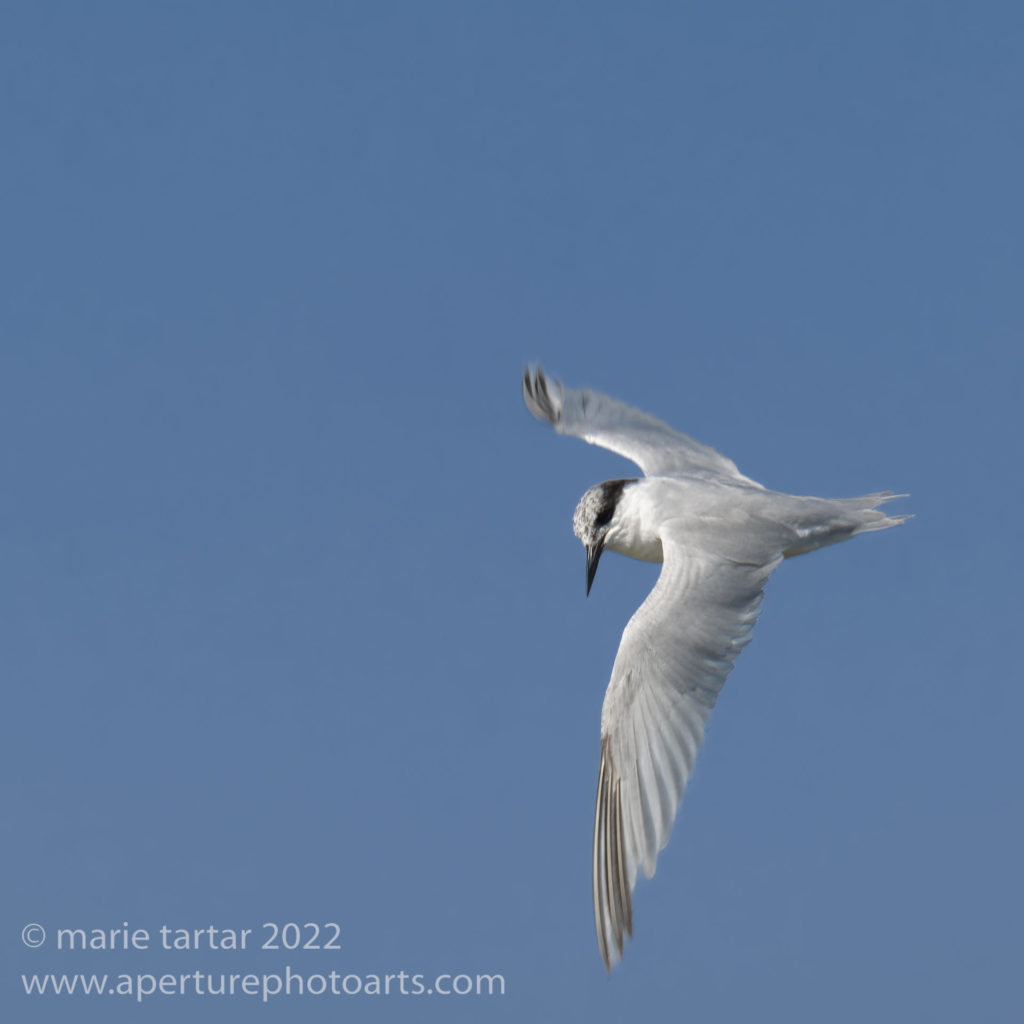
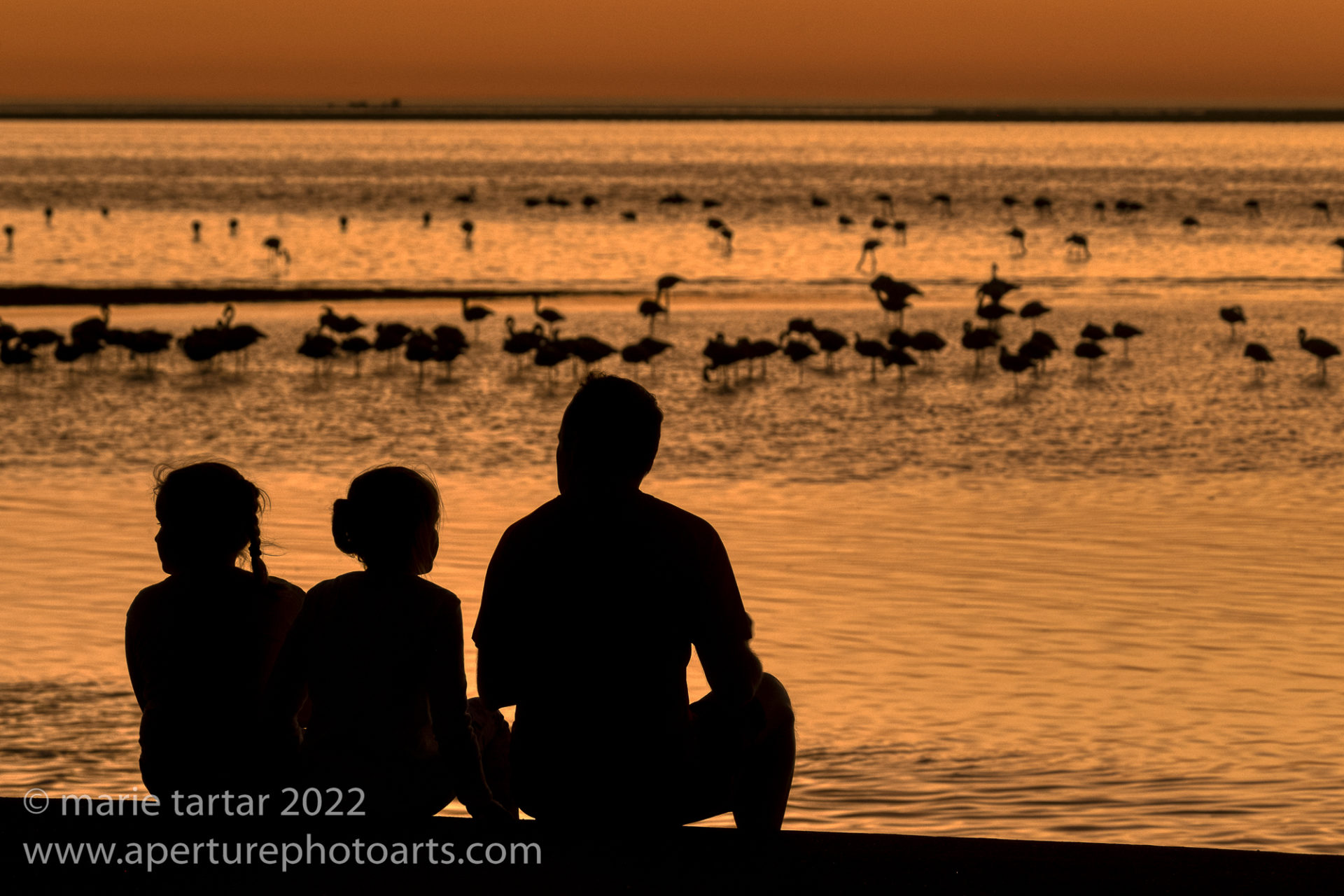
Fabulous photos Marie!
The sorting is getting harder and harder! I’m missing the “good old days” of going through the lower numbers of landscape photos,
-Marie